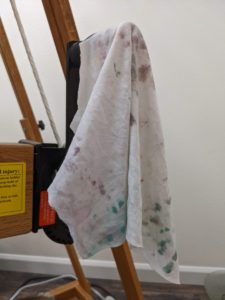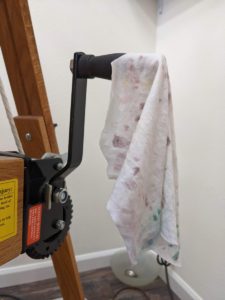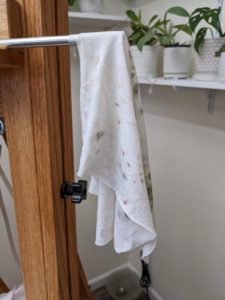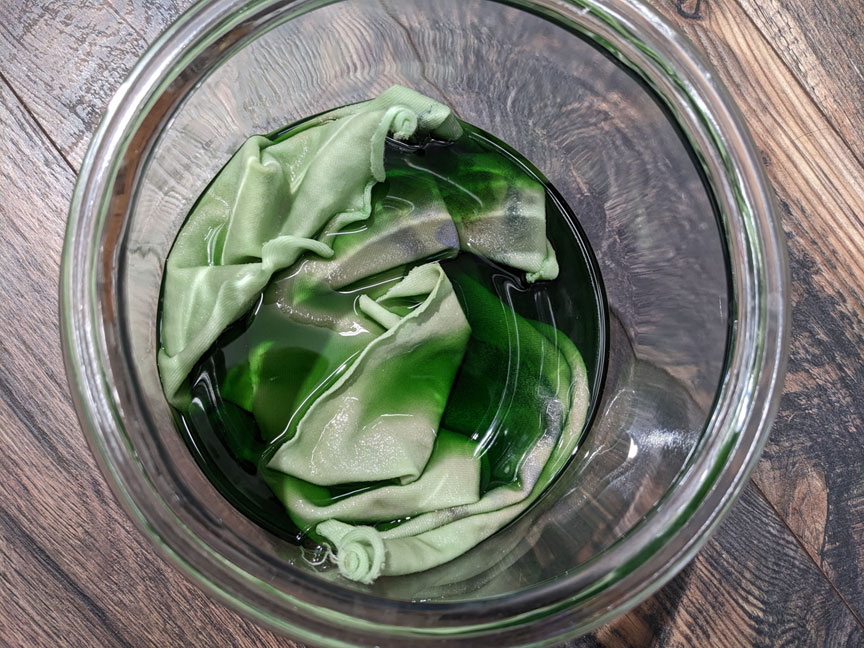Cloth rags are very absorbent and can be an excellent choice if you want to save money and make your painting process more environmentally friendly. The cloth easily cleans your bush, absorbing the paint and oils without any extra thought or work, so you can stay focused on your painting.
A common reason why painters use cloth rags is to reduce waste by cleaning and reusing their painting rags. Cleaning your painting rags does add an extra step but the joy of using a cloth rag and knowing you are reducing the waste caused by your painting practice may make it the right choice for you.
If you plan to reuse your cloth rags incorporating an efficient cleaning method will make this process much easier and simpler to adopt. The most common issue I have come across is when clumps of paint dry on the rag. Once the paint dries the cloth becomes hard and scratchy, then fails to absorb the paint again. Another issue to remember is that rags with oil on them can spontaneously combust. This is important to keep in mind when you design your workflow.
Prevent Spontaneous Combustion
Oil soaked into a cloth rag can run the risk of spontaneous combustion when your rags are left wadded up after you finish painting for the day. Cleaning your rags right away when you wash your brushes can help prevent spontaneous combustion because your rags aren’t sitting around drying out. You can wash them with an oil-based soap, such as a soft hand type of soap, any hair conditioner also works to loosen the oils, or even the soap you use to clean your brushes will work. But washing right away can be time-consuming. Keep reading for an easier option.
The Best Method For Cleaning Cloth Rags
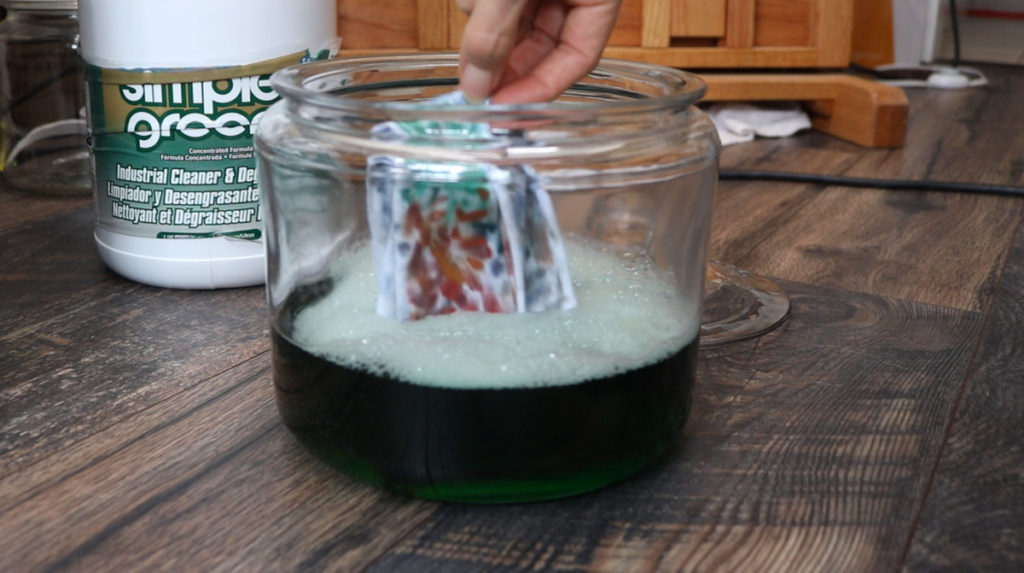
This method saves time and is one of the safest methods to prevent spontaneous combustion. Who wants to spend a bunch of extra time cleaning rags, or brushes after a day of painting, I have developed a quick and easy way of handling clean-up.
The best method for cleaning your oil painting cloth rags is to soak them in Simple Green All-purpose cleaner overnight and then in the morning, or the next time you paint, you can rinse them off in the sink.
This method allows you to quickly end your painting day. The simple green breaks down the oils, but the pigments will still color your rags, so when rinsing, don’t worry about having stains on the rags. The cloth will feel washed, it won’t have clumps of paint hardened on the surface, which would make the rag unusable. If you started with white rags, over time they will definitely change colors eventually turning gray.
The easiest way to incorporate this method into your workflow is to get a glass or metal container with a lid. I like to use a glass jar so I can see when there are rags that need to be cleaned inside. Fill the container with enough Simple Green All-purpose cleaner to cover the rag or rags and leave it in a corner of your studio or painting area. When you have finished painting for the day you can drop your used rag in the container and leave it be. The next day or whenever you return to your studio you can simply take the rags out and rinse them in the sink. Sometimes if the paint is thick on your rag it might take slight rubbing but usually, the Simple Green breaks up the oils enough that it comes off easily.
Preparing To Use Cloth Rags For Oil Painting
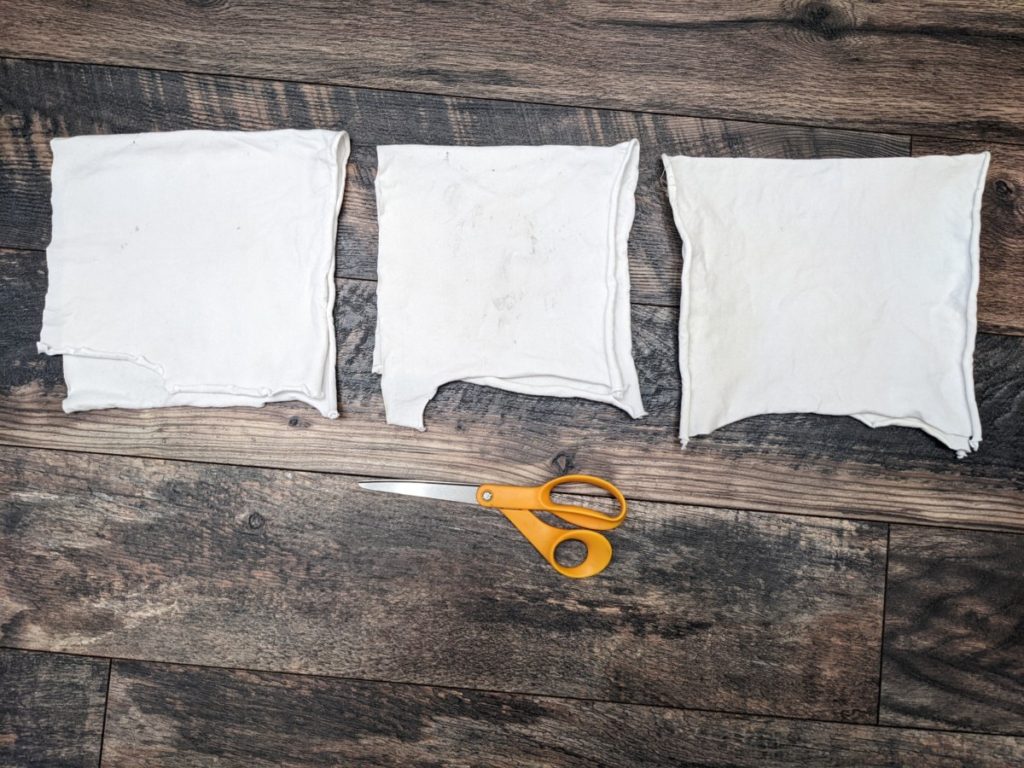
First, you need to acquire some cloth rags. These could be old T-shirts, pants, or sheets. I prefer cotton or a cotton blend, and I try to avoid synthetics. You want the cloth to be absorbent, and cotton is the best.
If you don’t have old cotton clothes lying around, you can also buy T-shirt rags in bulk. You can buy shop rags at any auto parts store as well.
Once you have your rags cut them into squares or rectangles in a size you are comfortable with AND that will fit into your container of Simple Green easily. I like to make my cloth piece rectangles so that I can fold them in half and have extra absorbing power, this also prevents any oils or pigments from bleeding through to the surface your rag is on, which might be your leg if you are sitting or your hand if you like to hold onto your rag.
Washing Your Cloth Rags
After your rags have been soaking in the simple green overnight or even a few days, I’ve been known to leave them in there for a week or more, it is time to get them out and rinse off the diluted paint. Fish out your cloth and squeeze out the excess Simple Green. When you do this you will see lots of pigment draining off, this will make your bucket of Simple Green turn opaque light green, rather than the translucent dark green it normally is. This is normal and you don’t have to worry about it, the pigments will settle after a day or so. You can still put a new used rag into it and it will keep working as normal.
Be careful not to drip simple green on your carpet or rugs. Take the rags over to your sink, a utility ink is best if you have one. A note on sink types, I suggest making sure you do this in a metal or porcelain sink, some sinks are made of plastic and will become stained over time, if it is your utility sink you may not mind, but if you want your basin to stay white do not wash your rags or brushes in a plastic sink.
The goal in rinsing is to get all of the paint residue and Simple Green off the rag. I start by squeezing the rags in my fist a few times, turning it between, this makes the simple green foam up and helps pull the loose pigments off. Do this over the sink and you will see the dirty color of your pigments dripping into the sink. Next, turn the water on and rinse. If you want to save water you can fill the sink halfway and plug it to rinse multiple rags at the same time. You may need to repeat this a couple of times to get all the Simple Green residue out.
Can You Wash Oil Paint Rags In Your Washing Machine?
It might seem like an easy quick way to wash your rags, but it can lead to very negative results. The oils in your paint will spread all over the inside of your washing machine and contaminate any future washes you do in that machine.
Do not wash your oil painting rags in a washing machine. Water and detergent are not enough to break down the oils and the paint will spread all over the inside of the machine.
Even if you soak the rags in Simple Green, do not try to cut corners and toss them into your washing machine. The paint will still make a mess of your device and that would be a very expensive mistake.
Drying Cloth Rags
I recommend hanging your rags to dry. Wring them out very well over your sink and then hang them over your easel or on a drying rack. I would not put them into your dryer either. If there are any oils still on the rag putting them in your dryer will cause them to go rancid and smell bad. This could also make your dryer smell bad in the future. It’s best to keep our painting rags separate from our home laundry.
